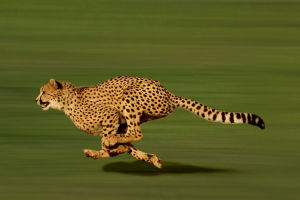Dragonflies are one of the most ancient creatures that have been around for millions of years. Despite the vast biome of the earth, there are only a little over 5,000 dragonfly species worldwide. These fascinating insects are often found in habitats such as ponds, rivers, and fields.
Dragonflies are known for their exceptional flying abilities. They can fly up and down, hover like a helicopter, and even mate in mid-air. Since they only feed on the prey they catch while flying, they starve if they are unable to fly.
As adults, dragonflies feed on insects and have great control over mosquito populations. In fact, a single dragonfly can consume 30 to hundreds of mosquitoes each day, making them an expert mosquito predator.
Dragonflies use their feet to catch their insect prey, and they are incredibly efficient hunters. A Harvard research project found that dragonflies capture 90 to 95 percent of the prey released into their enclosures.
Sometimes, dragonflies of different species gather in large groups, numbering in the hundreds or thousands. This behavior is either foraging or migratory, and little is currently known about it.
Compared to other insects, dragonflies have exceptionally keen vision. They can detect the movement of other flying objects, which helps them avoid collisions with other objects in the air and capture fast-flying prey accurately.
Dragonflies have two large compound eyes, each consisting of as many as 30,000 ommatidia that can detect small flying prey. They use 80 percent of their brain to process the information they receive through their visual organs.
Dragonflies are ectothermic creatures, meaning that their body temperature changes with the temperature of the external environment. However, they can also regulate their body temperature.
For instance, they can rapidly rotate their wings when flying back and forth to increase their body temperature. Additionally, they can warm themselves by basking in the sun when resting in direct sunlight.
The dragonfly life cycle lasts approximately one to two years, during which time they spend most of it as larvae. Dragonfly larvae live in water and use their jaws to hook aquatic insects or small fish, which they then swallow.
After undergoing multiple molts, they grow into adult dragonflies. Once the adult dragonflies mate, the female dragonflies choose a suitable water area to lay their eggs. The larvae then hatch and spend their lives in the water, molting, and growing.
Despite their small numbers, dragonflies play a crucial role in the ecosystem. They help control the insect population, such as mosquitoes, and provide an essential food source for many birds and other animals.
It's important to note that dragonflies can also engage in aggressive behavior, especially when threatened or disturbed. Therefore, when observing dragonflies, it's important to respect their natural habitat and individual habits and avoid causing them harm.
Dragonflies are incredibly fascinating insects with remarkable abilities. From their exceptional flying skills to their keen vision and their critical role in the ecosystem, they are undoubtedly one of the most remarkable creatures on Earth.


